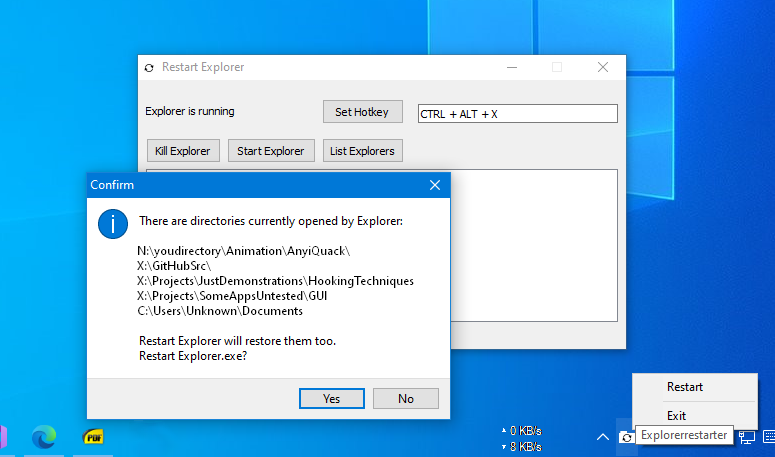

This command works by undoing changes that were made in the specified commit by creating a new commit and not actually removing any previous commits. Instead, the recommended approach would be to use the revert command. At this point it's highly advised that you do not use something like git reset since you'd be rewriting history.
Github desktop revert to previous commit code#
So let's say you committed your code and then pushed it to the remote repository. So if you have uncommitted changes that you want to keep, then this is likely the option you want. This option works much the same way as git reset -hard, but it only affects the commit history, not your working directory or staging index. The other option you may consider is the -soft option. The stash command saves your working changes (without any commits or changes to the tree), and then stash pop brings them back. To avoid losing any working changes, you can use the stash and stash pop commands: $ git stash $ git reset -hard $ git stash pop This means that by using just this command you'll not only revert to a previous commit, but you'll lose all working changes in the process.

This includes the commit history reference pointers, the staging index, and your working directory. Using the -hard option, everything is reverted back to the specified commit. The reset command has three different options, two of which we'll describe here: $ git reset -hard The only way to find and recover these unreferenced commits is with git reflog. While this is an effective solution, it's a dangerous one since you're rewriting history and leaving the "deleted" commits unreferenced, or "orphaned". If you haven't yet published your commits to a remote repository, like GitHub, then you can essentially delete previous commits by using the reset command. This is a complicated topic (which is true for many Git topics in general), so make sure you follow the instructions that best suits your needs. In this article I'll show a few ways to revert your commits, depending on your use-case. Whether you accidentally commit changes, or just realized your previous committed code isn't what you wanted, often times you'll need to revert a previous commit in Git. This equally applies to version control tools as well. This document is inspired by - Thank you.If I've learned anything in my 15+ years of programming, it's that mistakes are common, and I make a lot of them. If you have the master branch checked out locally, you can also do it in two simpler steps: First reset the branch to the parent of the current commit, then force-push it to the remote. Where git interprets x^ as the parent of x and + as a forced non-fastforward push.

Translated to git terminology, we want to force the master branch of the origin remote repository to the parent of dd61ab32: git push origin +dd61ab32^:master Let's say we have a remote origin with branch master that currently points to commit dd61ab32. git revert 'Ībout History Rewriting Delete the last commitĭeleting the last commit is the easiest case. Just like above, the bad commit remains there, but it no longer affects the the current master and any future commits on top of it. Reverting a commit means to create a new commit that undoes all changes that were made in the bad commit. Instead of going through all the changes manually, you can simply tell git to revert a commit, which does not even have to be the last one. Sometimes you may want to undo a whole commit with all changes.


 0 kommentar(er)
0 kommentar(er)
